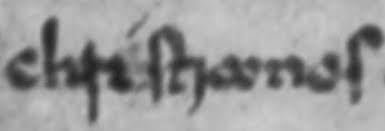
Continuing from Part 1 and Part 2 . . .
All the same notes apply re my modifications of some sections of the translation, additional notes and hyperlinks.
3. Tacitus and Josephus

The information we get from Ehrman about Tacitus and the Testimonium Taciteum, which he highly values, on 2 (two!) pages of the book is not enough to keep skin and bones together. We are only briefly informed about the content and the historical background of this testimony, but about the problems with it Ehrman has almost nothing at all to say. Ehrman speaks of the Roman historian Tacitus and his “famous Annals of Imperial Rome in 115 CE” (p. 54) and the passage that reports on the burning of Rome and the subsequent persecution of Christians by the Emperor Nero. According to Ehrman, Tacitus is said to have considered Nero the arsonist, but this is not true. If Ehrman had studied the text more thoroughly, he would have noticed that although Tacitus assumes that Nero was interested in the burning of Rome, he leaves the question of guilt in the balance – unlike Suetonius, to which Ehrman presumably refers. In any case, there are mass executions of Christians, here called “Chrestiani“, some of whom are torn apart by wild dogs and others burned alive to illuminate the imperial park at night. In this context, there is now also talk about the author of this name, Christ (the “Chrestus”, as the magnifying glass on the cover of this website shows), who was “put to death by the procurator, Pontius Pilate, while Tiberius was emperor; but the dangerous superstition, though suppressed for the moment, broke out again not only in Judea, the home of the disease, but in the capital itself, where all things horrible or shameful in the world collect and find a vogue.”
Ehrman sees here a testimony to the historicity of Jesus, even though he admits that the text does not speak of Jesus but of Christ and that it is based on Christian sources. Moreover, Ehrman suggests that some mythicists argue that the Testimonium Taciteum was not written by Tacitus but interpolated “by Christians, who copied them [Tacitus, Pliny, Suetonius]” (p. 55).
Unfortunately, however, he keeps the arguments they put forward for this viewpoint to himself – if he knows them at all. Ehrman considers these arguments to be a merely a trick to explain everything that doesn’t fit the bill as a later falsification.
However, the radical critics who speak of interpolation will certainly have given reasons. What are they?

Since Ehrman remains stubbornly silent, let’s name a few. They arise from a (literary-critical) consideration of the context in which the passage of Tacitus is embedded. The 42-43rd chapter was about Nero’s lively building activity. After the fire in Rome, the emperor first used the situation to create new parks and gardens, and then to build houses and apartments according to a new, more spacious design. Chap. 45 continues this theme after the section on the persecution of Christians with an introductory “interea” (meanwhile). Now it is emphasized that the money for the building projects came primarily from the provinces and that even some temples in Rome were robbed of their gold to finance the emperor’s projects.
The text that has been handed down thus offers an extremely strange train of thought: Nero has the Christians burned, the people have pity on them – “meanwhile” (interea) the Roman Empire is being plundered. It is obvious that such a nonsensical train of thought could by no means have been the intention of the narrator. Between chapters 44 and 45 there is no connecting point to which the “interea” could refer. If it is to establish a meaningful connection, it can, in terms of content, only tie up to Ch. 43 but not to 44: Rome is being rebuilt – in the meantime the empire is being plundered for it! Ehrman does not need to be convinced by this argument. But he should at least know it so that he can deal with it. Continue reading “Prof. “Errorman” and the non-Christian sources — Part 3: Tacitus and Josephus”
